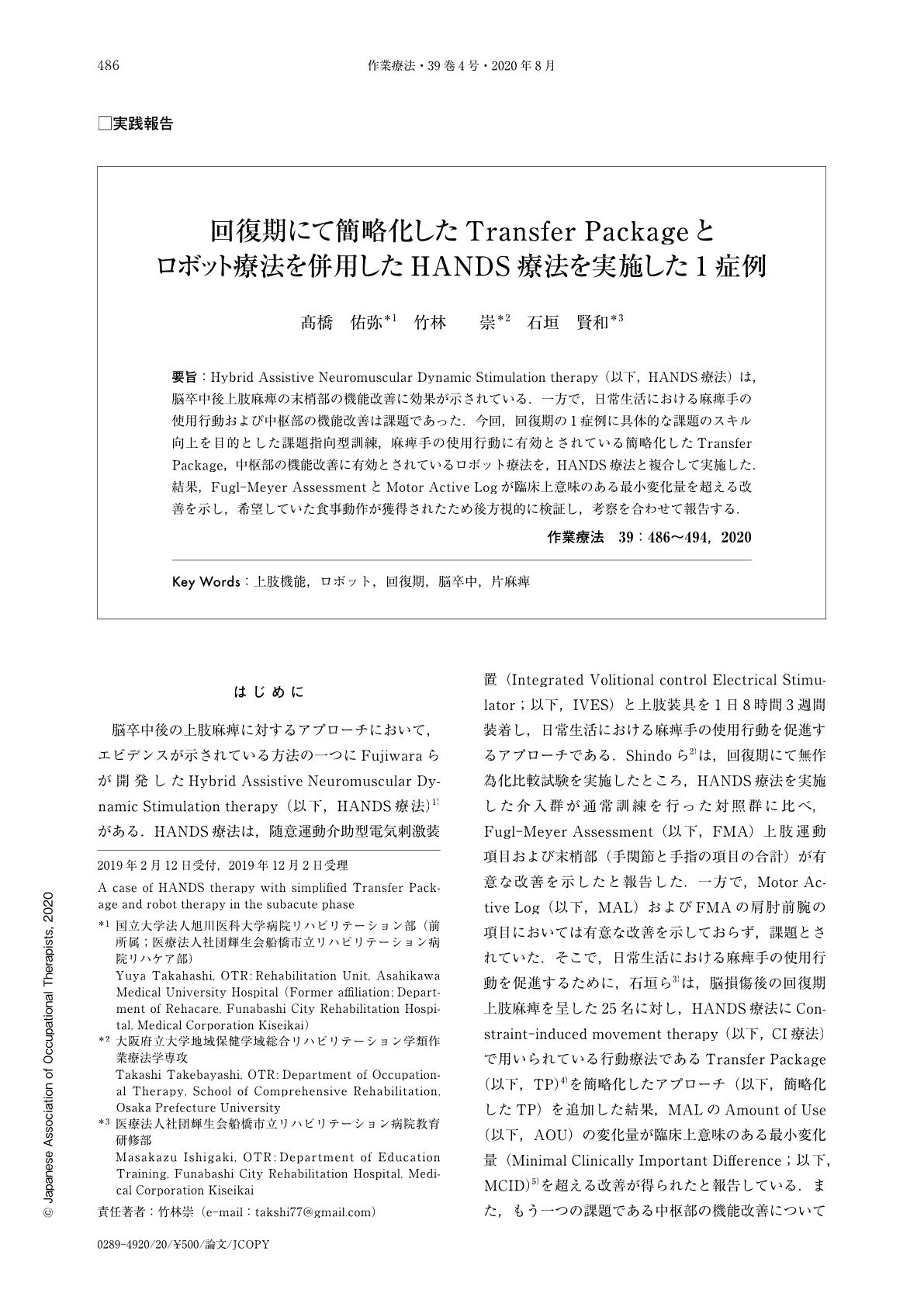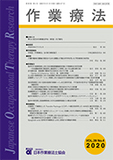Japanese
English
- 販売していません
- Abstract 文献概要
- 1ページ目 Look Inside
- 参考文献 Reference
- サイト内被引用 Cited by
要旨:Hybrid Assistive Neuromuscular Dynamic Stimulation therapy(以下,HANDS療法)は,脳卒中後上肢麻痺の末梢部の機能改善に効果が示されている.一方で,日常生活における麻痺手の使用行動および中枢部の機能改善は課題であった.今回,回復期の1症例に具体的な課題のスキル向上を目的とした課題指向型訓練,麻痺手の使用行動に有効とされている簡略化したTransfer Package,中枢部の機能改善に有効とされているロボット療法を,HANDS療法と複合して実施した.結果,Fugl-Meyer AssessmentとMotor Active Logが臨床上意味のある最小変化量を超える改善を示し,希望していた食事動作が獲得されたため後方視的に検証し,考察を合わせて報告する.
Hybrid Assistive Neuromuscular Dynamic Stimulation therapy (HANDS therapy) has been shown to improve the function of the peripheral area of paretic upper limb after stroke. However, the issues related to HANDS therapy remain, including lack of improvement of the paretic arm use in real world, and the limited function of the central area of the paretic upper limb. Simplified Transfer Package (TP) is a therapy effective for improving function of paralyzed hands using task-oriented training aimed at enhancing the skills of specific tasks. Robot therapy is considered effective for the central nervous system. TP, Robot Therapy, and HANDS therapy were combined to improve the affected arm function and behavior of the stroke patient. Fugl-Meyer Assessment (FMA) and Motor Active Log (MAL) showed clinically meaningful improvements. Additionally, the patient was able to use the chopsticks that was the patient's goal illustrating the efficacy of the combined upper limb approach.

Copyright © 2020, Japanese Association of Occupational Therapists. All rights reserved.


